Lamprene (50 mg)
Lamprene is generically known as clofazimine. It is an antileprosy agent present as gelatin capsules meant for oral use.
Composition
Each capsule consists of 50 mg of clofazimine suspended in a base of oil-wax. Clofazimine is a bright red dye with iminophenazine as substituent group. It is available in reddish brown powder. The molecular weight of clofazimine is 473.4 g/mol.
Uses
Lamprene is used to treat lepromatous leprosy. It has not been reported to be efficient in treating other inflammatory reactions associated with leprosy. Lamprene prevents the mycobacterial growth and binds to the DNA of mycobacteria preferentially. Lamprene also shows some anti-inflammatory actions to control the leprosy having erythema nodosum leprosum complications.
How to Use
This drug should be consumed with food. Preferably it should be combined with one or more antileprosy agents and taken. This is done to stop the arrival of drug resistance. To treat the dapsone-resistant leprosy, it should be taken at a dose of 100 miligram everyday combined with other antileprosy medicines for 3 years, continued by monotherapy of lamprene (100 mg). The treatment of lepromatous leprosy complicated by erythema leprosum is based on the severity of symptoms.
Contraindications
This medicine should be used carefully in patients suffering from gastrointestinal problems like diarrhea and abdominal pain. Let your doctor know if you have: any allergies or stomach problems. Be careful while operating machinery, driving or perform any activity if this medicine makes you feel dizzy. Tell your doctor if you are taking any herbal supplements, prescribed or non-prescribed medicine or any other dietary preparations. Do not start/stop any medication without the approval of the doctor or pharmacist.
Side-Effects
The most regular adverse side effects are generally dosage related and disappear as soon as the medicine is discontinued. The common side effects are as follows: skin pigmentation from black to pink in most of the patients, dryness of skin, rashes, ichthyosis, pruritus, epigastric pain, nausea, abdominal pain, vomiting, diarrhea, gastrointestinal intolerance, dryness in eyes, discoloration of urine, elevated blood sugar level, variation in sputum, feces, sweat; elevated ESR, conjunctival pigmentation in eyes, irritation , itching and burning in eyes, diminished vision; dizziness, fatigue, neuralgia, headache, drowsiness, giddiness, taste disorder, depression, yellowing of skin or eyes, elevated albumin levels, anemia, loss of appetite, increased sensitivity to light, unusual weakness, eosinophilia, hypokalemia, cystitis, edema, fever, vascular pain, splenic infarction, lymphadenopathy, hepatitis, bowel obstruction, constipation, jaundice, enlarged liver, weight loss, anorexia.
Pregnancy and Lamprene
This medicine should be taken during the gestation period only when if it is clearly required. There are no well-controlled and adequate studies in pregnant ladies. Discuss the benefits and risks with your physician or doctor. It has been reported that the skin of the baby born to that female who had taken this medicine during pregnancy was extremely pigmented at birth. Lamprene is excreted into the maternal milk and can cross the human placenta. Therefore, it should not be administered to a nursing mother unless clearly required.
